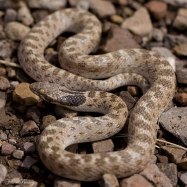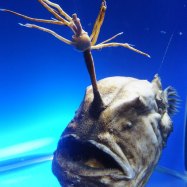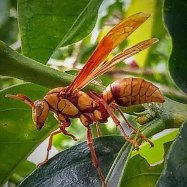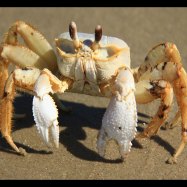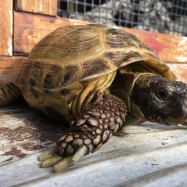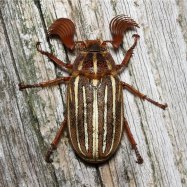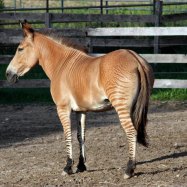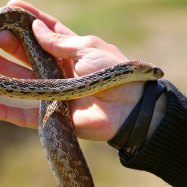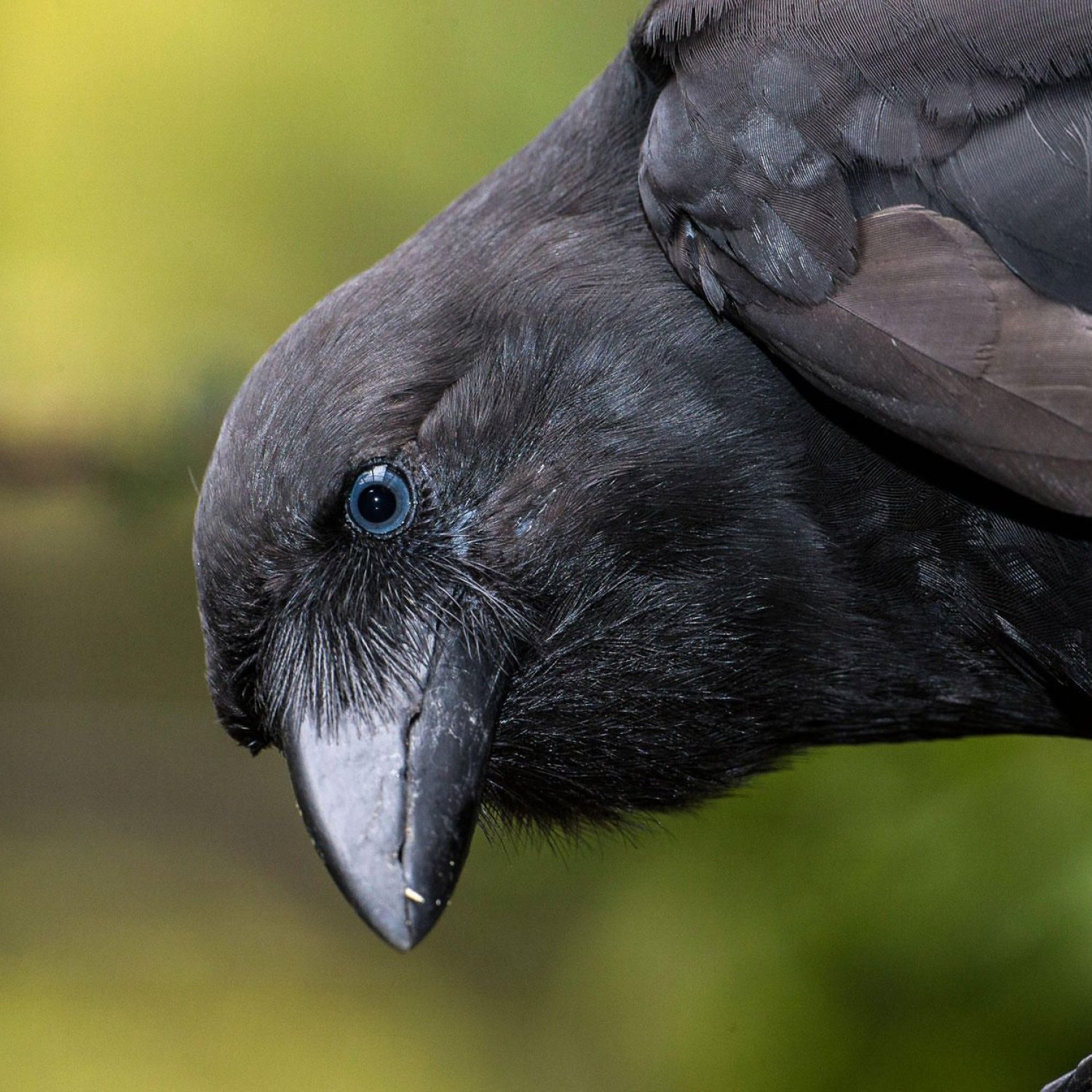
Hawaiian Crow
17–19 inches
The Hawaiian Crow, also known as the 'Alalā, is a medium-sized crow species endemic to the island of Hawaii. With a body length of 17-19 inches, it is a distinctive member of the Corvidae family. Unfortunately, this once widespread bird is now critically endangered due to habitat loss and predation. Efforts are underway to save this unique species from extinction. #HawaiianCrow #endangeredspecies #Corvidae
Animal Details Summary:
Common Name: Hawaiian Crow
Kingdom: Animalia
Habitat: Forests
The Mysterious Hawaiian Crow: An Endemic Bird from the Depths of the Hawaiian Islands
In the depths of the Hawaiian Islands, an eerie yet majestic bird lurks – the Hawaiian Crow. With its stark black color and medium size, it may seem like just another crow to the untrained eye. But this bird is far from ordinary. Endemic to the island of Hawaii, the Hawaiian Crow, also known as ‘Alalā in the Hawaiian language, is a unique and fascinating creature that has captured the attention of scientists and bird enthusiasts alike Hawaiian Crow.The Origins
The Hawaiian Crow, scientifically known as Corvus hawaiiensis, is a species of crow that belongs to the kingdom Animalia, phylum Chordata, and class Aves. It is a member of the family Corvidae, which includes other popular birds such as crows, ravens, and jays. The Hawaiian Crow is native to the Hawaiian Islands, located in the Pacific Ocean, and is the only species of crow found in the state of Hawaii.This species of crow was first discovered in the early 1800s by explorers, and it quickly became a symbol of Hawaiian culture and mythology. In Hawaiian folklore, this bird was considered a messenger of the gods, and its movements were believed to hold great significance. However, with the arrival of humans and invasive species, the Hawaiian Crow population faced a devastating decline. In fact, by the late 20th century, the Hawaiian Crow was declared extinct in the wild due to habitat loss and predation by introduced species.
The Comeback
Fortunately, conservationists and scientists were not ready to give up on the Hawaiian Crow just yet. In 1981, the last remaining wild Hawaiian Crow was brought into captivity in a desperate attempt to save the species from extinction Hare. Since then, a lot of time, effort, and research has been put into the conservation and restoration of this magnificent bird.Thanks to these efforts, the Hawaiian Crow was successfully reintroduced into the wild in 2016, marking a significant milestone in the species' recovery journey. At present, the population stands at approximately 200 individuals, with both wild and captive-bred birds living on the island of Hawaii.
The Appearance
Similar to other crows, the Hawaiian Crow has a striking black coloration and a medium-sized body, ranging from 17 to 19 inches in length. However, it has some distinctive features that set it apart from other crow species. For instance, the Hawaiian Crow has a proportionately larger and denser bill, which is useful for cracking open hard seeds and nuts, making up a significant part of their diet. It also has a shorter tail and rounder wings, making it more suited for living and flying through dense forests.The Forest Dwellers
Speaking of forests, the Hawaiian Crow's preferred habitat is the native montane wet forests of Hawaii, found at elevations of 3,300 to 6,500 feet above sea level. This bird has a special reliance on these forests, making it an important indicator species for the health of the ecosystem. It plays a crucial role in dispersing seeds and controlling the population of invasive insects, making it a crucial component of the island's delicate ecosystem.The Omnivorous Lifestyle
The Hawaiian Crow is an omnivorous bird, meaning that it has a diverse diet consisting of both plant and animal matter. In the wild, these birds primarily feed on fruits, seeds, and insect larvae. However, they have also been observed eating other birds, eggs, and even stealing the eggs of other birds for food. In captivity, they are also fed a mixture of human-made foods, including rodents, quail eggs, and dog food.The Unique Culture
Aside from its scientific importance, the Hawaiian Crow also holds a special place in Hawaiian culture. For centuries, the Hawaiian people have revered this bird and incorporated it into their cultural practices and traditions. For instance, in ancient Hawaiian beliefs, the Hawaiian Crow was seen as a guardian and protector of the forests and the native people.In addition, the Hawaiian Crow is also celebrated in modern culture through art, music, and even currency. In Hawaii, the Hawaiian Crow is featured on the back of the Hawaiian quarter, showcasing its significance and cultural value to the state.
The Future
While the reintroduction of the Hawaiian Crow is a significant milestone, it is far from the end of the species' journey. As an endangered species, the Hawaiian Crow is still vulnerable to threats such as habitat loss, invasive species, and disease. Therefore, conservation efforts and research are ongoing to ensure the long-term survival of these birds.Organizations such as the Hawaii Endangered Bird Conservation Program and San Diego Zoo Global are working tirelessly to protect and restore the Hawaiian Crow population. Through these efforts, the species is gradually making a comeback, giving hope for a brighter future for this unique and mysterious bird.
The Mystical Hawaiian Crow
In conclusion, the Hawaiian Crow, also known as ‘Alalā, is a captivating bird with a fascinating history and cultural significance. After facing the brink of extinction, this bird has made a remarkable comeback, thanks to the efforts of conservationists, and is now slowly thriving in its native habitat. With its striking appearance, omnivorous diet, and unique cultural importance, the Hawaiian Crow is truly a mysterious and enigmatic creature that continues to capture the imagination of all those who cross paths with it.

Hawaiian Crow
Animal Details Hawaiian Crow - Scientific Name: Corvus hawaiiensis
- Category: Animals H
- Scientific Name: Corvus hawaiiensis
- Common Name: Hawaiian Crow
- Kingdom: Animalia
- Phylum: Chordata
- Class: Aves
- Order: Passeriformes
- Family: Corvidae
- Habitat: Forests
- Feeding Method: Omnivorous
- Geographical Distribution: Hawaiian Islands
- Country of Origin: United States
- Location: Endemic to the island of Hawaii
- Animal Coloration: Black
- Body Shape: Medium-sized crow
- Length: 17–19 inches
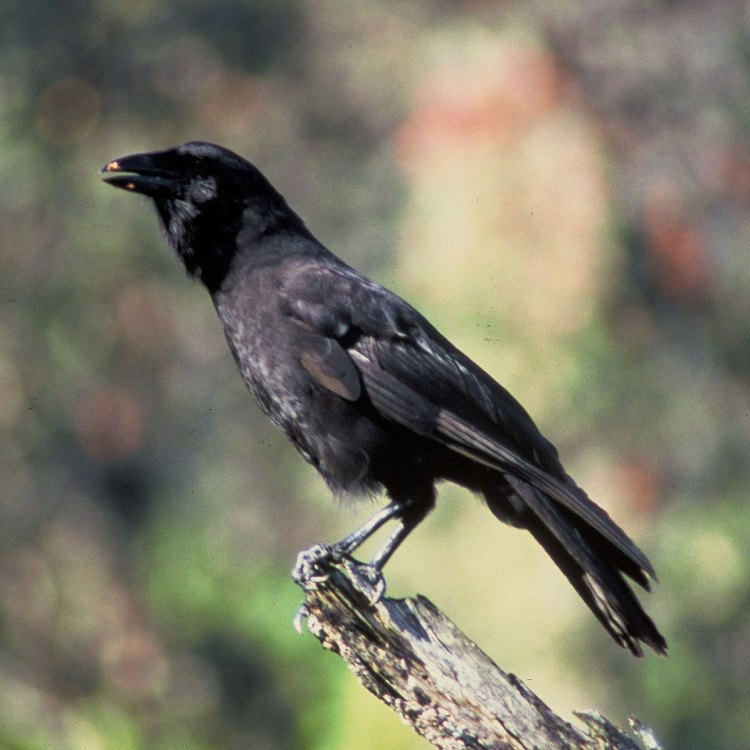
Hawaiian Crow
- Adult Size: Medium
- Average Lifespan: Unknown (est. up to 20 years)
- Reproduction: Breeding once a year
- Reproductive Behavior: Monogamous
- Sound or Call: Varied vocalizations including calls and short series of caws
- Migration Pattern: Non-migratory
- Social Groups: Family groups
- Behavior: Intelligent and social
- Threats: Habitat loss, predation, disease, and persecution by humans
- Conservation Status: Critically Endangered
- Impact on Ecosystem: Seed dispersal
- Human Use: Historically hunted for feathers and meat
- Distinctive Features: Large, strong bill and long legs
- Interesting Facts: Only native crow species in Hawaii, one of the most endangered birds in the world
- Predator: Rats, cats, and other introduced predators
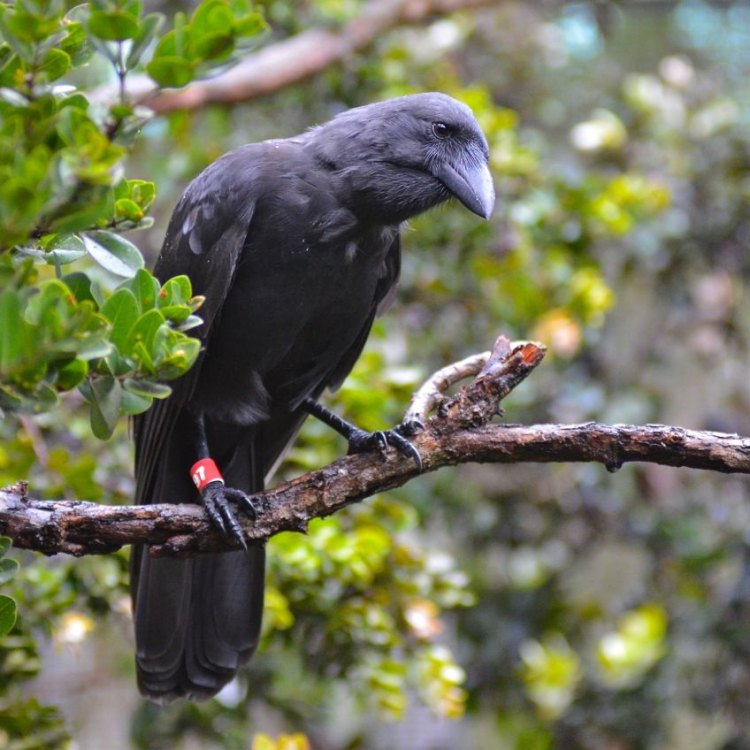
Corvus hawaiiensis
The Hawaiian Crow: A Critically Endangered and Unique Species
In the lush forests of Hawaii, among the vibrant flora and fauna, there is a bird that stands out with its jet-black feathers and large, strong bill. This is the Hawaiian crow, also known as the 'Alalā in the Hawaiian language. It is the only native crow species in the beautiful islands of Hawaii and is one of the most endangered birds in the world. Today, the Hawaiian crow can only be found in captivity, with just a few individuals left in breeding programs PeaceOfAnimals.Com. In this article, we will explore the unique features and threats faced by the Hawaiian crow, and the important role it plays in its fragile ecosystem.Adult Size and Average Lifespan
The Hawaiian crow is a medium-sized bird, with an average weight of around 1 pound and a wingspan of about 2 feet. They are slightly smaller than their mainland cousins, the American crow. However, what sets them apart is their strong, curved bill that is used for various tasks, including foraging and opening seeds and fruits.
Unfortunately, the average lifespan of the Hawaiian crow remains unknown, as there are no wild individuals left to study. However, it is estimated that they can live up to 20 years in the wild. Sadly, due to their critically endangered status, most Hawaiian crows born in captivity do not reach their full lifespan, highlighting the dire situation this species is facing.
Reproduction and Reproductive Behavior
The Hawaiian crow, like many other bird species, breeds once a year. Breeding season starts in February and lasts until June, with both males and females participating in building the nest Hepatic Tanager. They are monogamous, meaning that they mate with only one partner for the breeding season.
During this time, the pair performs intricate and elaborate courtship dances, involving wing-flapping, cawing, and other vocalizations. Once the female lays her eggs, both parents take turns incubating the eggs and caring for the chicks until they fledge.
Sound or Call
The Hawaiian crow is known for its varied vocalizations, which include calls and short series of caws. They use these vocalizations to communicate with their family group, attract mates, and defend their territories.
Interestingly, recent research has shown that the Hawaiian crow, like other intelligent bird species, has the ability to use tools and also possess problem-solving skills. This further highlights their complex social behaviors and communication skills.
Migration Pattern and Social Groups
Unlike many other bird species, the Hawaiian crow is non-migratory, meaning that it does not travel long distances when seasons change. They typically live in family groups consisting of a breeding pair and their offspring. However, they may also join larger flocks during the non-breeding season for protection and foraging purposes.
Behavior and Threats
The Hawaiian crow is known for its intelligence and social nature. They are highly adaptable birds, capable of thriving in a variety of habitats, including open forests, grasslands, and even urban areas.
Sadly, their adaptability has also made them susceptible to various threats. The primary threat to the Hawaiian crow is habitat loss and degradation, as native forests are cleared for agriculture and development. In addition, introduced predators such as rats, cats, and other birds, have also contributed to the decline in the Hawaiian crow population. Disease and persecution by humans, who historically hunted them for their feathers and meat, have also impacted their numbers.
Conservation Status and Impact on Ecosystem
Due to the numerous threats faced by the Hawaiian crow, the species was declared critically endangered in 1994. Since then, numerous conservation efforts have been made to save this unique bird from extinction. The San Diego Zoo, in partnership with the Hawaiʻi Endangered Bird Conservation Program, has been breeding Hawaiian crows in captivity and releasing them into the wild to increase their population.
Aside from maintaining a healthy ecosystem, Hawaiian crows play a crucial role in the dispersal of seeds in their native forests. They consume a variety of fruits and seeds, and as they move around, they spread these seeds, aiding in the reproduction and growth of plants in their habitat. Without this important ecological role, the fragile ecosystem of Hawaii would suffer greatly.
Distinctive Features and Interesting Facts
The Hawaiian crow is easily recognizable by its jet-black feathers and distinctive large, strong bill. They also have longer legs compared to other crow species, which allow them to forage on the ground for food.
Aside from their unique physical features, the Hawaiian crow is also steeped in cultural significance for the Hawaiian people. In Hawaiian mythology, the 'Alalā is considered a messenger of the gods and a protector of the forest. In addition, the Hawaiian crow is depicted in many traditional Hawaiian art pieces and is deeply ingrained in the culture of the islands.
In recent years, there have been efforts to reintroduce Hawaiian crows to the wild, and small populations have been successfully released in their native habitat. However, these individuals are still under constant monitoring to ensure their survival and prevent any further decline in their already critically endangered species.
In Conclusion
The Hawaiian crow, the only native crow species in Hawaii, is one of the most endangered birds in the world. Its intelligence, adaptability, and important ecological role make it a crucial species in its fragile ecosystem. But sadly, due to numerous threats, the Hawaiian crow is on the brink of extinction.
Conservation efforts and breeding programs are currently underway, but it is crucial for humans to realize the impact of their actions on the environment and work towards protecting and preserving the Hawaiian crow and its habitat. After all, it is our responsibility to ensure the survival of these unique and magnificent creatures for future generations to appreciate and admire.
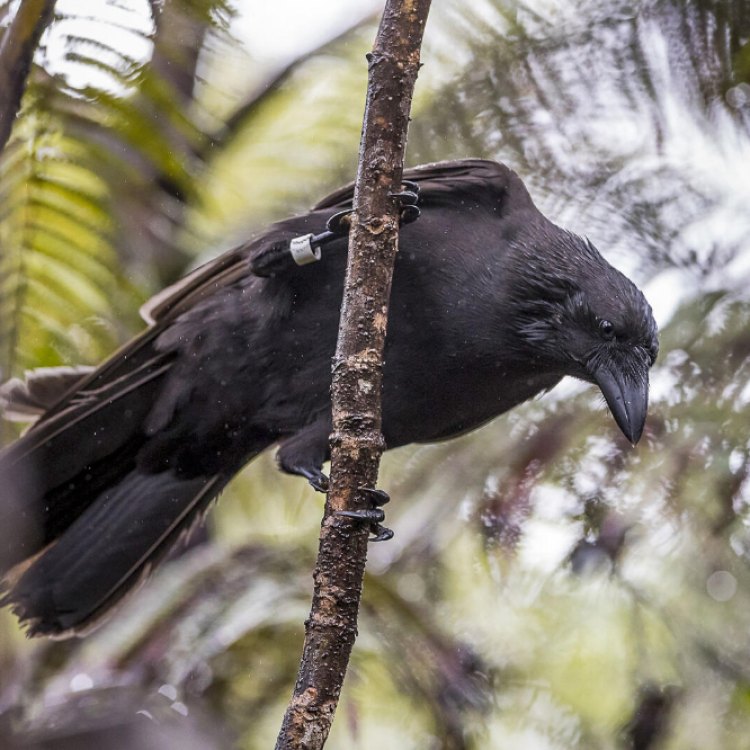
The Mysterious Hawaiian Crow: An Endemic Bird from the Depths of the Hawaiian Islands
Disclaimer: The content provided is for informational purposes only. We cannot guarantee the accuracy of the information on this page 100%. All information provided here may change without prior notice.

